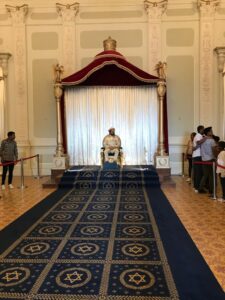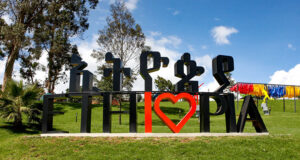Ethiopia has over 80 ethnic groups in the country, and each group has a very unique step and rhythm. Due to its old history, dating back to over 3000 years, Ethiopia’s folk dance is a symbol of their mosaic culture and an integrated part of life for Ethiopian’s.
Ethiopia is divided into nine states and each one of them have a different traditional dance forms. One of the most prominent among them is the dance from the Oromia region.
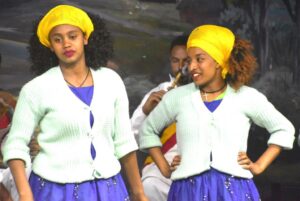 Oromia region is the largest and their dance styles are different depending on a place. Some of famous dances are “Shoa Oromo” and “Halar Oromo”. Especially, Shoa Oromo dance, which has unique costume as well as steps. Women wear leather-made wild two-piece costume decorated with shells. Men wear fur skin like lion’s mane on the head and use stick for dance. What is most surprising is women’s very fast and sharp neck motion. You never forget it once you watch it!
Oromia region is the largest and their dance styles are different depending on a place. Some of famous dances are “Shoa Oromo” and “Halar Oromo”. Especially, Shoa Oromo dance, which has unique costume as well as steps. Women wear leather-made wild two-piece costume decorated with shells. Men wear fur skin like lion’s mane on the head and use stick for dance. What is most surprising is women’s very fast and sharp neck motion. You never forget it once you watch it!
The songs which are sung during the dance performance are very different from the traditional African type, the emphasis is given more to string instruments than drum beats. The vocals are also quite unique and a flavour of Afro- Asian influence can be easily heard.
Media error: Format(s) not supported or source(s) not found
Download File: https://eastafricavoyages.com/wp-content/uploads/2020/06/dance.mp4?_=1
The uniqueness of this Shoa Oromo dance form is the violent shaking of the head and the shoulder by the performers. The women go from a slow circling of the head in the air to a sudden increase to a complete break neck speed. The head movement can be so dramatic that the audience from other parts of the world will surely expect these performers to have neck made of rubber and spring.
This years event that was held at at unity park which is itself a cultural symbol as it takes more than 20ha out of the 40ha compound and where the Office of the Prime Minister is located feauring six attractions
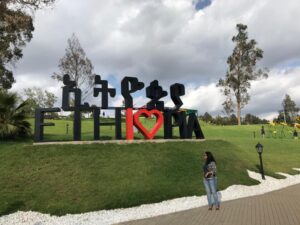
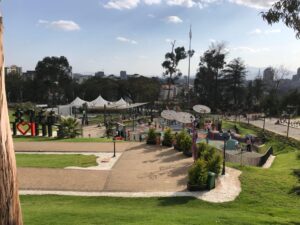
It was disclosed that five of the attractions inside the park have been opened for visitors since October 10, while the sixth attraction – a zoo inside the park – will be ready within a month’s time. The now opened five attractions are the historical buildings, indigenous plants exhibition, indigenous black mane lion zoo, a green area and the nine regions’ pavilion. Furthermore, the park will also feature more than 1000 display items.
